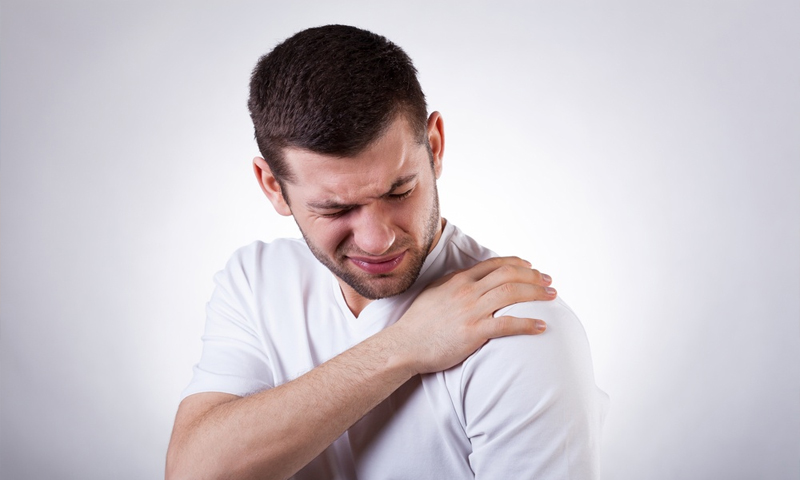shoulder impingement symptoms and treatment
Medically Reviewed By : Dr Sravya, MBBS, MS
Introduction to Shoulder Impact
As we know, the syndrome of shoulder impingement is the result of a vivacious cycle of rubbing the rotator cuff between the top outer edge of the shoulder and the humerus. This rubbing does lead to further narrowing of the space and swelling, which results in irritation and pain. The treatments for this kind of medical condition are:
Cortisone injections
Anti-Inflammatory medications
Rest
Surgery
Physiotherapy
Ice

Who has been suffering from shoulder impingement?
- The syndrome of shoulder impingement is been more commonly seen in people who are athletes or indulge in sports activities such as football, basketball, soccer, hockey, tennis, swimming, etc.
- The condition of shoulder impingement can also be a result of an injury, such as falling directly onto the shoulder or falling onto an outstretched arm. So, let’s discuss some signs and symptoms of this condition, which are:
Signs and Symptoms
There are some signs and symptoms for this kind of medical condition, which are as follows:
- having pain when reaching it behind the back, such as zipping your zip or trying to take the amount from the back pocket.
- having pain when sleeping on the side where there is a lot of pain.
- having tenderness or pain in the front of the shoulder.
- having pain when arms are extended above the head.
- having an arm or shoulders, stiffness, or weakness.
- having an ache or pain at night where the patient is unable to sleep.
- having pain that runs from the front of the shoulder to the side of the arm.
- having a pain when lowering down the arm or lifting the arm, when reaching or from a raised position.
Signs and symptoms of this medical condition usually develop over weeks to months. The condition of shoulder impingement is much more closely related to another common source, of pain in the shoulder, which is called rotator cuff tendonitis and bursitis. These types of conditions can occur in the form of a combination.
Having shoulder pain can also, be a sign or a symptom of a serious injury to a rotator cuff. A small hole or a tear is been called, a rotator cuff tear. If the rotator cuff has been turned completely, the patient he/she is more likely to have a type of significant weakness or they, might be not able to raise their arm against gravity. In addition to this, A patient he/she, might have a rupture(tear), of the biceps muscle tendon, as a part of the continuing impingement procedure.
Treatments
- The treatment for the condition of the shoulder impingement syndrome, is for restoring shoulder function and reducing the amount of pain. The treatments for this condition is been including, Steroid injections, Ice, Physiotherapy, Over-the-counter(OTC) Anti-Inflammatory medications, and Rest.
- The common sense for approaching activities is much more helpful. For avoiding, the activities, in which a person he/she, needs to frequently be behind their back or reach overhead. These motions, usually, do make shoulders with the condition of shoulder impingement to be worsened. The treatments for this condition can be:
- Ice: By applying Ice, it should be applied on the shoulder, for about 20-30 minutes, once or twice a day. By application of the Ice, it helps for relieving pain and swelling.
- Physiotheraphy: Physiotherapy is playing a vital role, in treating the condition of shoulder impingement. In many of the case histories, the patient he/she, needs to go for about 10-15 days for a physiotherapy session at their clinic. Physiotherapists will be making their patients he/she, stretching exercises, for improving the Range of Motion(ROM), of the shoulder. As the pain will be lessened, they can begin the strengthening exercises, for improvement of the rotator cuff muscles.
- Injections: If the patient he/she, is having a severe amount of pain, a stronger prescription anti-inflammatory medication, might be prescribed over a Cortisone injection into a bursa beneath the acromion, might be given.
- Surgery: This procedure is performed arthroscopically, which means through small cuts (incisions) in the shoulder. Other problems with the shoulder can be repaired at the time of the surgery, including inflammation of the biceps tendon, a partial rotator cuff tear, and Arthritis in the shoulder. Open Surgery is surgery with a larger cut in the front of the shoulder. This is another option.
Medications
For relieving the pain and swelling, orthopedic surgeons or physiotherapists might recommend some Non-Steroidal Anti-Inflammatory drugs (NSAIDs), which are:
- Naproxen (Naprosyn and Aleve)
- Ibuprofen (Advil and Motrin IB)
- Aspirin
Frequently Asked Questions
The recovery period for shoulder impingement takes about three to six months, depending
upon how the injury was developed and the severity of the injury.
The tests for diagnosing the condition of the shoulder impingement are:
- The Hawkins test
- The Neer test
In the Neer test, the medical examiner stabilizes the scapula while passively elevating the shoulder,
which has the effect of pushing the humeral head into the acromion.
There are mainly four types of shoulder impingement, which are:
- Subcoracoid impingement
- Anterior acromion impingement
- Suprascapular nerve (at the spinoglenoid notch) impediment
- Posterosuperior glenoid rim impingement
